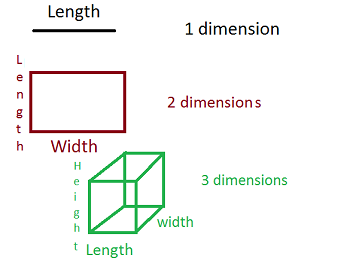Unlocking Growth: Mastering the 4 Ps of Marketing for Effective Strategy
Introduction: The Cornerstone of Every Marketing Strategy
Building an effective marketing strategy is fundamental for any business aiming to grow, engage customers, and outpace the competition. At the heart of every robust marketing plan lies a classic-and still highly relevant-framework: the 4 Ps of marketing. Originally developed by E. Jerome McCarthy in the 1960s and popularized by experts like Philip Kotler, the 4 Ps (Product, Price, Place, Promotion) provide a structured approach that guides marketers in bringing their products and services to market efficiently and effectively [1] .
Understanding the 4 Ps of Marketing
The 4 Ps of marketing are:
- Product
- Price
- Place
- Promotion
Each “P” addresses a core element of the marketing mix and has a direct impact on customer experience and business outcomes [2] .
1. Product: Delivering Value Through Solutions
The product encompasses the goods or services a company offers to meet consumer needs. This includes not just the core item itself, but also features, quality, design, branding, packaging, and any supporting services or warranties. For example, Apple’s iPhone is not just a device-it’s an ecosystem of design, usability, and support that together drive its market appeal.
When developing a product strategy, businesses must:
- Identify customer needs and pain points through market research
- Design products that provide real solutions
- Iterate offerings based on customer feedback and trends
Implementation guidance:
Start by surveying your target audience, analyzing competitors, and mapping out your product’s unique selling proposition. Continual product improvement is critical for long-term success
[5]
.
Example:
A SaaS company might offer a free trial to showcase its features and collect user feedback, then refine its offering to better fit market demand.
Alternative approaches:
In service businesses, the “product” may be the experience itself. For example, a consulting firm can differentiate through proprietary methodologies or exceptional customer service.
2. Price: Setting the Right Value Exchange
Price is the amount customers pay to acquire your product or service. Pricing strategy is both an art and a science, as it must reflect production costs, competitor pricing, perceived value, brand positioning, and market demand. Flexible pricing models-such as discounts, bundles, or tiered plans-can be powerful tools for maximizing revenue and customer adoption.
Considerations for pricing:
- Assess direct and indirect production costs
- Research competitor pricing for similar offerings
- Understand your target market’s willingness to pay
- Monitor the impact of pricing changes over time
Implementation guidance:
Conduct a break-even analysis to understand the minimum price required for profitability. Use A/B pricing tests to determine optimal price points for different segments.
Example:
Streaming services like Netflix utilize tiered pricing to appeal to different segments, from basic to premium subscribers.
Challenges and solutions:
Price wars can erode margins. Focus on differentiating your product to justify your price, or introduce loyalty programs to retain value-conscious customers.
3. Place: Making Products Accessible to Customers
Place refers to the distribution channels through which products reach consumers. This could mean physical locations, online stores, direct-to-consumer websites, third-party marketplaces, or a hybrid of several channels. The goal is to ensure that your target audience can access your product wherever and whenever they need it.
To optimize distribution, marketers should:
- Analyze where their customers prefer to shop and interact
- Choose channels that align with their brand and product type
- Logistically support timely and reliable delivery
Implementation guidance:
Start by mapping your buyer’s journey to identify high-impact touchpoints. Consider partnerships with established retailers or marketplaces to expand reach. For online businesses, ensure your website is mobile-friendly and optimized for search engines.
Example:
A consumer electronics brand may sell through both big-box retailers and its own e-commerce platform, ensuring broad exposure and control over the customer experience.
Alternative pathways:
Service businesses might leverage digital platforms for virtual consultations, while local businesses can use community events or pop-up shops to increase visibility.

Source: freepik.com
4. Promotion: Communicating Value and Driving Demand
Promotion encompasses all activities that communicate the value of your product and persuade customers to take action. This includes advertising, public relations, social media campaigns, email marketing, events, and more. A well-crafted promotional plan builds awareness, generates interest, and nurtures leads through the sales funnel.
Effective promotion requires:
- Understanding your audience’s media habits and preferences
- Crafting compelling messages that highlight benefits
- Choosing the right mix of channels for maximum impact
- Measuring results and refining campaigns based on data
Implementation guidance:
Develop a content calendar with a mix of paid, owned, and earned media. Use analytics tools to track engagement and conversions, then adjust your tactics as needed.
Example:
A product launch might include a combination of influencer partnerships, targeted social media ads, and a public relations push to get coverage in industry publications.
Potential challenges:
Oversaturation can lead to customer fatigue. Focus on delivering value and authenticity in your messaging to stand out.
Integrating the 4 Ps into a Cohesive Strategy
Success comes from balancing all four elements-product, price, place, and promotion-so they work together seamlessly. For instance, an innovative new product may require premium pricing, selective distribution, and high-impact promotional campaigns to create buzz. Conversely, a value-driven product may benefit from widespread availability and price-based promotions.

Source: pngtree.com
To implement the 4 Ps framework effectively:
- Conduct thorough market research to understand your audience and competition
- Develop a detailed marketing plan that addresses each “P” and their interactions
- Launch small-scale experiments to test assumptions and refine strategies
- Collect and analyze performance data, then iterate on your approach
Remember, the marketplace evolves continuously. Regularly revisit your marketing mix to ensure it aligns with changing customer needs and industry trends [3] .
Alternative and Evolving Models
While the 4 Ps remain foundational, modern businesses may also explore complementary frameworks such as the 4 Cs (Consumer, Cost, Convenience, Communication) to put greater emphasis on customer-centric strategies [4] . However, the principles behind the 4 Ps continue to provide a solid foundation for both new and established brands.
How to Get Started and Where to Learn More
If you are new to marketing or looking to refine your strategy, begin by mapping each of the 4 Ps as they apply to your business. You can:
- Survey existing and potential customers to gain insights into needs and preferences
- Benchmark your offerings against competitors using publicly available market reports
- Consult with local Small Business Development Centers (SBDCs) or marketing associations for expert advice
- Search for reputable marketing courses or certifications from accredited institutions
For verified, up-to-date information, consider visiting the official websites of leading marketing organizations, such as the American Marketing Association (AMA), or searching for current publications on the topic from established business education providers.
Remember, there is no one-size-fits-all answer. The best approach is to tailor each element of the marketing mix to your business goals, target audience, and marketplace dynamics.
References
- [1] Mageplaza (2019). The 4 Ps of Marketing: Definition, Role, and Questions to Consider.
- [2] Campaign Monitor (2024). The Four Ps of Marketing Explained.
- [3] Indeed (2025). The 4 P’s of Marketing (With 3 Examples To Review).
- [4] Neil Patel (2025). 4 Ps of Marketing: Definition, How-To & Examples.
- [5] SurveyMonkey (2024). How To Use The 4 Ps Of Marketing For Successful Campaigns.
MORE FROM eboxgo.com













